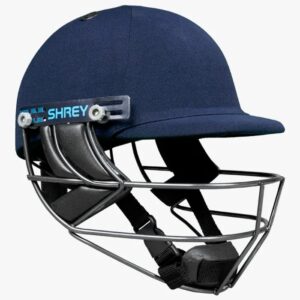Cricket is a sport that has evolved over centuries, with various formats and rules being developed to accommodate different styles of play. One such format that has gained popularity in recent years is white ball cricket. In this article, we will explore What is White Ball Cricket its Definition, Meaning, and How It Differs from Red Ball Cricket, its importance in the sport, and its evolution over time.
White Ball Cricket: Definition and Meaning
White ball cricket refers to the format of the game where matches are played using a white colored ball, rather than the traditional red ball used in Test matches. This format typically includes One Day Internationals (ODIs) and Twenty20 (T20) matches.
White ball cricket is a term used to describe the format of the game where matches are played using a white colored ball. This format is known for its fast-paced nature, with limited overs and shorter match durations compared to traditional Test matches. At its core, white ball cricket refers to cricket formats that utilize a white ball. The ball’s color helps with visibility, especially in day-night matches, which are often played under artificial lights.
Importance of Understanding White Ball Cricket in the Sport
Understanding white ball cricket is essential for players, coaches, and fans alike, as it has become a crucial part of the sport. The format has brought a new level of excitement and strategy to cricket, with high-scoring matches and quick-paced gameplay becoming the norm.
- Origins and History of White Ball Cricket
The origins of white ball cricket can be traced back to the 1960s, when the first One Day Internationals (ODIs) were introduced as a way to bring a new level of excitement to the sport. These matches featured limited overs and shorter match durations, making them more accessible to fans and players alike. - Evolution of White Ball Cricket in the Sport
Over the years, white ball cricket has evolved significantly, with the introduction of T20 matches in the early 2000s further revolutionizing the format. T20 matches are known for their explosive batting displays, with players aiming to score as many runs as possible in a limited number of overs.

What is White Ball Cricket?
White ball cricket is typically played in shorter formats such as ODIs, which consist of 50 overs per team, and T20 matches, which are limited to 20 overs per team. These formats focus on faster gameplay, with teams aiming to score as many runs as possible within a limited number of overs.
White ball cricket, also known as limited-overs cricket, is a format of the sport that has gained immense popularity in recent years. With fast-paced action and plenty of excitement, white ball cricket is becoming a favorite among fans around the world.
1) White Ball Cricket Format Explanation
White ball cricket is a format of the game where teams compete in limited-overs matches, typically using a white-colored ball. This format includes One Day Internationals (ODIs) and Twenty20 (T20) matches, which have a set number of overs per innings. In ODIs, each team gets 50 overs to bat and in T20 matches, each team gets 20 overs.
2) Rules and Regulations of White Ball Cricket Matches
In white ball cricket matches, there are specific rules and regulations that teams must adhere to. Some of the key rules include:
- Each team has a set number of overs to bat, and the team with the highest total score at the end of the match wins.
- In T20 matches, each bowler can only bowl a maximum of four overs.
- In ODIs, teams have the option to take a powerplay, where they can have a limited number of fielders outside the 30-yard circle.
- The fielding team must use a white ball to ensure visibility for both the players and the spectators.
3) Features of White Ball Cricket Games
White ball cricket matches are characterized by their high-scoring nature and fast-paced action. Some of the key features of white ball cricket games include:
- Explosive Batting Performances: With a limited number of overs, teams are often forced to go on the attack from the start, leading to aggressive and entertaining batting displays.
- Strategic Bowling: Bowlers must be at the top of their game to contain the opposing team’s batting lineup and take wickets at crucial moments.
- Close finishes: White ball cricket matches often go down to the wire, with matches being decided in the final overs or even the last ball of the game.
- Spectacular catches and run-outs: Fielders are pushed to their limits in white ball cricket, resulting in some breathtaking catches and run-outs that can turn the tide of the match.
White Ball Cricket Vs. Red Ball Cricket
In the world of cricket, there exists a distinction between two primary formats of the game: white ball cricket and red ball cricket. While both versions share similar rules and objectives, they present a unique set of challenges and strategies that set them apart from each other.
Here, we will explore the key differences between white ball and red ball cricket, compare their gameplay, rules, and tactics, and discuss the impact of ball color on match strategies and player performance.
A) Key Differences Between White Ball and Red Ball Cricket
The most obvious difference between white ball and red ball cricket is the color of the ball used in each format. In red ball cricket, a traditional red leather cricket ball is employed, while a white ball is used in white ball cricket. The contrasting colors of the two balls have a significant impact on visibility and swing movement, leading to varied strategies and gameplay styles between the two formats.
White ball cricket is primarily played in limited-overs matches, such as One Day Internationals (ODIs) and Twenty20 (T20) games, where teams are restricted to a specific number of overs. Red ball cricket, on the other hand, is epitomized by Test matches, which can extend over five days and has no limitations on the number of overs bowled.
B) Comparison of Gameplay, Rules, and Tactics in Both Formats
The gameplay in white ball cricket is fast-paced and high-scoring, with batters aiming to score runs quickly and bowlers focusing on containment and wicket-taking. In contrast, red ball cricket demands patience and endurance, as batters need to bat for extended periods, and bowlers need to maintain consistent pressure over long spells.
The rules and tactics employed in each format also vary significantly. In white ball cricket, teams utilize aggressive field placements and batting strategies to maximize runs and put pressure on the opposition. Bowlers often resort to variations like slower balls and yorkers to disrupt the batters’ rhythm. Red ball cricket, on the other hand, requires a more strategic approach, with bowlers aiming to exploit the conditions and batsmen looking to build partnerships and set a strong foundation for the team.
C) Impact of Ball Color on Match Strategies and Player Performance
The color of the ball plays a crucial role in shaping match strategies and player performance in cricket. The white ball tends to swing more in the air, especially during the initial overs, making it challenging for batters to sight and negotiate. In response, bowlers focus on swing and seam movement to generate wickets and contain the opposition.
On the other hand, the red ball offers more durability and consistency in terms of swing and seam, allowing for controlled bowling and strategic field placements. Batters in red ball cricket need to have a solid technique and a sound defensive game to survive long spells from bowlers and bat for extended periods.
In conclusion, white ball and red ball cricket present distinct challenges and opportunities for players and teams. While white ball cricket rewards aggression and innovation, red ball cricket emphasizes patience and endurance. The choice between the two formats ultimately depends on the playing conditions, team composition, and individual strengths of the players. Both formats have their own unique charm and allure, contributing to the rich tapestry of the game of cricket.

White Ball Cricket Equipment
In the world of cricket, the introduction of white ball cricket has revolutionized the way the game is played. While red ball cricket has its own charm and tradition, white ball cricket brings a whole new level of excitement and dynamism to the sport. One of the key aspects of white ball cricket is the equipment used, specifically the white balls.
i) White Balls Used in White Ball Cricket
White balls used in white ball cricket are made of high-quality leather and are generally harder and more durable compared to red balls. The white color of the balls allows for better visibility, especially under floodlights, making it easier for both players and spectators to track the ball’s movement. The white balls also have a smoother surface, which enables the bowlers to get more swing and movement in the air.
ii) Comparison With Traditional Red Balls Used in Red Ball Cricket
In traditional red ball cricket, red balls are used, which are softer and tend to lose their shine and hardness much quicker compared to white balls. This can make it challenging for bowlers to maintain consistency in swing and movement. Red balls also tend to get dirty and difficult to see, especially in low light conditions, which can affect the gameplay. White balls, on the other hand, remain brighter and more visible throughout the match, offering a more dynamic and engaging experience for players and spectators alike.
iii) Role of White Ball Equipment in Enhancing Player Performance
The white ball equipment, including the white balls, has played a crucial role in enhancing player performance in white ball cricket. The visibility and durability of white balls allow players to track the ball better and make more strategic decisions during the game. The smoother surface of white balls also provides bowlers with the opportunity to generate more swing and movement, giving them an edge over batsmen. Additionally, the bright color of white balls adds an element of excitement and glamour to the game, attracting a wider audience and increasing the overall popularity of white ball cricket.
In conclusion, white ball cricket equipment, particularly the white balls, has brought a new dimension to the sport of cricket. With improved visibility, durability, and performance, white balls have redefined the way the game is played and experienced. As white ball cricket continues to gain momentum and popularity, it is clear that white ball equipment will play a significant role in shaping the future of the sport.
Conclusion
White ball cricket holds immense importance in the modern cricket landscape and will continue to evolve and grow in the coming years. With its fast-paced and thrilling nature, the format has captured the hearts of fans worldwide and has helped cricket expand its reach and appeal. As we look towards the future, we can expect to see exciting developments and innovations that will further enhance the spectacle of white ball cricket.















